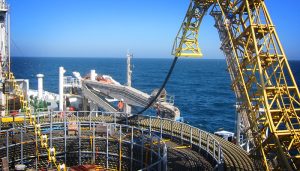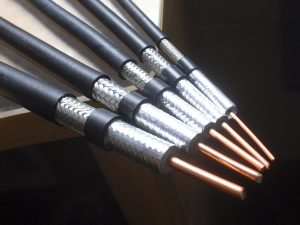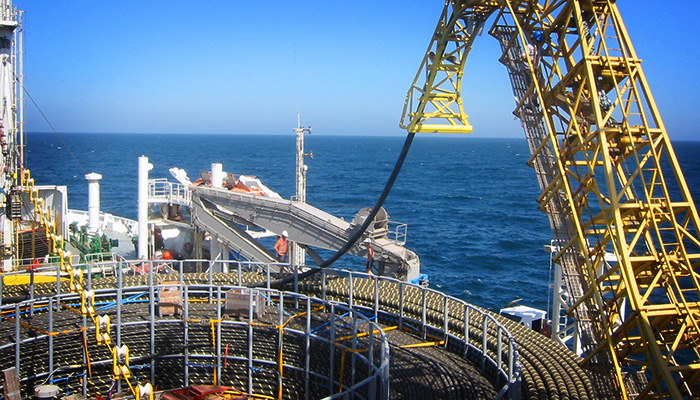French cable and fiber company Nexans has launched a new range of low-carbon distribution cables, the first of their kind on the French market.
The company’s new approach reduces the greenhouse gas emissions of its low- and medium-voltage cables by 35-50%, depending on the product.
About Carbon Emissions
Carbon emissions are the average greenhouse gas emissions generated during production, transport, and use. And recycling of the product. The dynamic carbon footprint is the cumulative amount of greenhouse gases emitted per unit of goods, which can vary from batch to batch of the same product.
Currently, the manufacture of one kilometer of cable generates two to three times the annual average emissions of French citizens.
These emissions come mainly from aluminum conductors alone. Which account for 70-90% of the total footprint, followed by plastics, transport, and manufacturing processes.
Calculation of Carbon Emissions
Every household emits “carbon” in its life. In electricity, CO2 emissions (kg) are equal to the number of kWh consumed multiplied by 0.785, i.e. 100 kWh of electricity is equal to approximately 78.5 kg of CO2.
In domestic natural gas, CO2 emissions in kilograms are equal to the number of kWh of natural gas used multiplied by 0.19.
For domestic tap water, CO2 emissions in kilograms are equal to the number of kWh of tap water used multiplied by 0.91.
When traveling, if you drive a small car, CO2 emissions in kilograms are equal to the number of fuel consumption times 2.7.
And so on.
Low carbon, which refers to lower greenhouse gas emissions, is dominated by carbon dioxide.
Saving water, electricity, fuel, and gas is the low-carbon lifestyle we advocate.
In recent years, global warming has become one of the biggest crises on Earth. And the emission of carbon dioxide, a greenhouse gas. It is often considered to be the most important cause of global warming.
Therefore, “low-carbon life” is quietly emerging, in our cable industry is also the same.

The Value of Low-Carbon Cables
To reduce the carbon footprint of its products, Nexans has adjusted its value chain:
It now uses 100% low-carbon aluminum, which meets the Aluminum Forward 2030 Alliance’s decarbonization standards.
It uses up to 50% recycled plastic in insulation and jacketing.
Furthermore, it applies various decarbonization measures to its manufacturing processes and transportation.
Not only that, but it selects suppliers based on their environmental performance.
Likewise, it manufactures all its products at its Jeumont and Bourg en Bresse plants in France.
But the cable’s environmental impact goes beyond its manufacturing.
About 90% of emissions are generated when grid cables are put into service, due to the loss of power accumulated over decades of use, known as the “Joule effect”.
How Low-Carbon Cables Reduce Carbon Emissions
Nexans has therefore designed a series of solutions to produce low-carbon grid cables throughout their life cycle.
It will provide engineering studies to determine the best cable type and cross-section for the entire lifecycle based on the application. It is offering new technologies such as the EDRMAX medium voltage cable. Thanks to its reinforced jacket, it can be buried as-is without the need for a sand bed. Thereby reducing CO2 emissions from the installation process by 10%.
Furthermore, it has digital solutions to improve customers’ productivity, such as the ULTRACKER series.
RecyC?bles, a joint venture between Nexans and French utility SUEZ, has designed technology to recycle copper and aluminum cables.
Nexans’ carbon trajectory is validated by the Science-Based Targets Initiative (SBTi), which aims to reduce emissions by 4.2% per year between 2019 and 2030.
Development of Low-Carbon Cables
Low-Carbon Copper Cables
It’s not just Nexans that started running low-carbon cables in several countries last year, in 2022.
“Cable manufacturer Ankett (NKT), its suppliers. And customers have agreed to use low-carbon copper for a 320 kV HVDC cable, which will be the world’s first high-voltage DC cable to use low-carbon copper!”
The cable system will be used at the Dogger Bank C wind farm in the North Sea.
When fully operational, the Dogger Bank wind farm will reportedly be the world’s largest offshore wind farm, capable of providing green electricity equivalent to the electricity used by 6 million UK households.
The use of low-carbon copper will make cable production more sustainable.
Claes Westerlind, executive vice president and head of high-voltage solutions at NKT, said, “This will ultimately help us meet our sustainability commitments. Including becoming a net-zero emissions company.”
The use of low-carbon copper is said to reduce the carbon footprint of high-voltage power cable systems by more than 23,000 tons of carbon dioxide equivalent, which is equivalent to the emissions of 7,700 average household cars in one year.

Low-carbon Environmentally Friendly Polypropylene Reduced-Insulation Cable
“On October 31, 2022, China’s first 35kV 3×400mm2 low-carbon and environmentally friendly polypropylene reduced-thin insulated cable was successfully put on the grid in Shanghai.”
This is another important breakthrough in the pilot application of low-carbon and environment-friendly cables in the Shanghai power grid. Following the first successful application of this type of cable in the 10kV grid in China in January 2020.
The 35kV low-carbon and environment-friendly polypropylene thinning insulated cable put into operation is located at Lianhang Road in Shanghai Minhang Industrial Park, connecting a 35kV substation and a customer plant, with a total length of 1.2 km.
Communication network equipment uses a lot of metal and plastic materials. And the carbon emissions generated during the extraction of these materials belong to the range of three emission categories.
The first step to reducing carbon emissions from materials is to reduce the use of materials, such as minimalist equipment.
The second is to use low-carbon materials to replace existing materials with high-carbon emissions.
Next one is to make full use of the original cabinet, cable, and other materials in the network transformation.
The last one is the recovery and recycling of end-of-life equipment.
Green energy efficiency is an inherent requirement for the sustainable development of communication networks. Carbon neutrality will not bring changes to the development path of communication networks. But will put forward higher requirements for energy efficiency.
Carbon neutrality will enhance the importance of green power supply and energy efficiency. And promote the continuous optimization of network architecture.
And the continuous development of energy-saving technologies.
And accelerate the development of new technologies such as green power supply and intelligent energy-saving applications.
Carbon neutrality will promote communication networks to enter the green and low-carbon 2.0 era.
